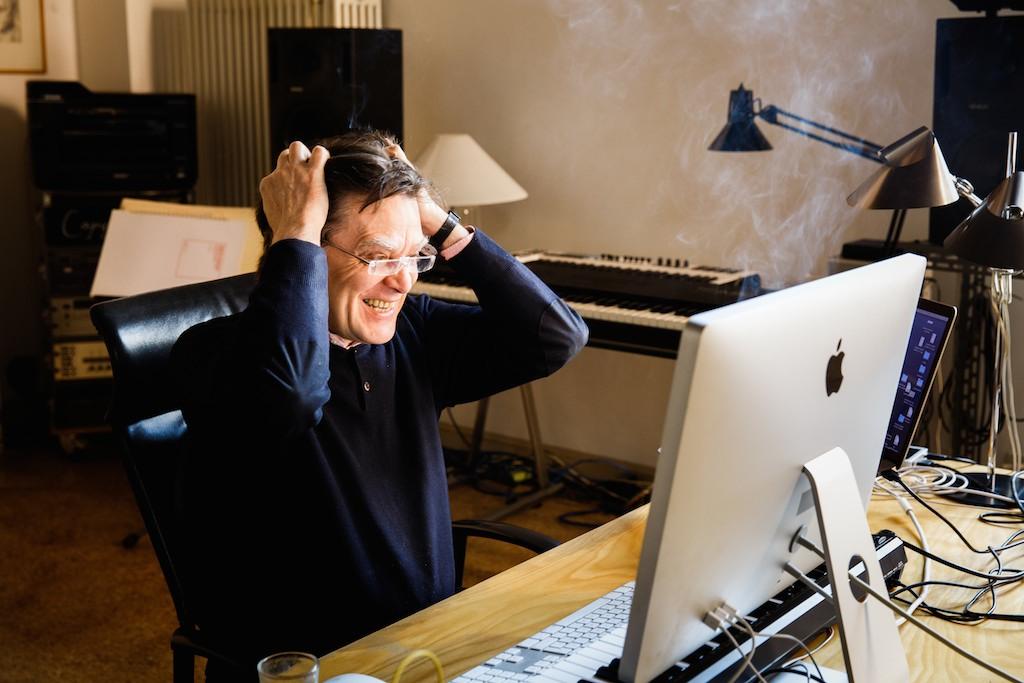-
Posts
2,940 -
Joined
-
Last visited
Contact Methods
- Website URL
Profile Information
-
Gender
Male
Recent Profile Visitors
17,773 profile views
-
 JulioHerrlein reacted to a post in a topic:
ChatGPT - Opusmodus GPT
JulioHerrlein reacted to a post in a topic:
ChatGPT - Opusmodus GPT
-
 RST reacted to a post in a topic:
ChatGPT - Opusmodus GPT
RST reacted to a post in a topic:
ChatGPT - Opusmodus GPT
-
 RST reacted to a post in a topic:
ChatGPT - Opusmodus GPT
RST reacted to a post in a topic:
ChatGPT - Opusmodus GPT
-
 Pli reacted to a post in a topic:
ChatGPT - Opusmodus GPT
Pli reacted to a post in a topic:
ChatGPT - Opusmodus GPT
-
 dazjjackson reacted to a post in a topic:
ChatGPT - Opusmodus GPT
dazjjackson reacted to a post in a topic:
ChatGPT - Opusmodus GPT
-
 JulioHerrlein reacted to a post in a topic:
ChatGPT - Opusmodus GPT
JulioHerrlein reacted to a post in a topic:
ChatGPT - Opusmodus GPT
-
 opmo reacted to a post in a topic:
New forum sub section on 'Workflow'?
opmo reacted to a post in a topic:
New forum sub section on 'Workflow'?
-
opmo started following Text above bar? , New forum sub section on 'Workflow'? , ChatGPT and 7 others
-
I am very happy to do that. Any anyother name sugestions for the new forum?
-
 opmo reacted to a post in a topic:
Steinberg Halion Sound-Set options
opmo reacted to a post in a topic:
Steinberg Halion Sound-Set options
-
Yes, you need ChatGPT Plus subscription.
-
The ChatGPT still hallucinating but not to much. You always can tell the Opusmodus GPT to 'Search the Knowledge' first before any responds. Hopefully the ChatGTP will improve with time.
-
 Stephane Boussuge reacted to a post in a topic:
ChatGPT - Opusmodus GPT
Stephane Boussuge reacted to a post in a topic:
ChatGPT - Opusmodus GPT
-
 jesele reacted to a post in a topic:
ChatGPT - Opusmodus GPT
jesele reacted to a post in a topic:
ChatGPT - Opusmodus GPT
-
Dear Opusmodus Users, We are excited to announce the launch of Opusmodus GPT, a customised version of ChatGPT tailored specifically for the Opusmodus community. Opusmodus GPT incorporates the entire Opusmodus documentation along with comprehensive usage examples. This tool allows you to interact and receive responses in your preferred language, making it easier than ever to explore and utilise Opusmodus functionalities. You can access Opusmodus GPT directly through the following link: ChatGPT - Opusmodus GPT CHATGPT.COM Composing Continuum We hope you find this tool valuable and look forward to your feedback. Best regards, The Opusmodus Team
-
you need to set the :encode to NIL: (rnd-order '(e e e -e e e_q) :encode nil)
-
 opmo reacted to a post in a topic:
Steinberg Halion Sound-Set options
opmo reacted to a post in a topic:
Steinberg Halion Sound-Set options
-

mouse cursor which gets stuck between composer and listener
opmo replied to david's topic in Support & Troubleshooting
Opusmodus 22. is no more supported, therefore no fixes possibile. -

mouse cursor which gets stuck between composer and listener
opmo replied to david's topic in Support & Troubleshooting
Opusmodus 3.0 dose not have this particular panel next to the Listener, therefore what you insinuate can't be true. The Escape key should solve the problem on Opusmodus 2.0. -
Loop iteration is one of the most powerful and useful functions in environments like Opusmodus. I recommend spending some time understanding the grammar of the iteration possibilities. loop for i in '((c4) (cs4d4) (f4) (e4fs4)) collect (flatten (filter-repeat 1 (chord-inversion 1 i :series t :root t)))) => ((c4) (cs4d4 d4cs5) (f4) (e4fs4 fs4e5)) It would be better to flatten the sequence first: (flatten (loop for i in '(c4 cs4d4 f4 e4fs4) collect (filter-repeat 1 (chord-inversion 1 i :series t :root t)))) => (c4 cs4d4 d4cs5 f4 e4fs4 fs4e5) I could modify the function to prevent single pitch repetitions. With the possibile change: (chord-inversion 1 '(c4 cs4d4 f4 e4fs4) :series t :root t) => ((c4) (cs4d4 d4cs5) (f4) (e4fs4 fs4e5))
-

Function for removing a bar or bars from an OMN sequence
opmo replied to RST's topic in Function Examples
remove-bar select-measure retain-bar search the system for bar -
 opmo reacted to a post in a topic:
order/disorder (2019 rev. 2023)
opmo reacted to a post in a topic:
order/disorder (2019 rev. 2023)
-
 RST reacted to a post in a topic:
tonality-map: controlling in which octave tones occur
RST reacted to a post in a topic:
tonality-map: controlling in which octave tones occur
-
 jesele reacted to a post in a topic:
filter-repeat?
jesele reacted to a post in a topic:
filter-repeat?
-
With the update (3.0.29349) you will be able to do that: (filter-repeat 5 '(1 2 2 3 1 4 5 2 1 6 4 3 4 2 2 3 1 1 3) :position t) => (1 2 3 4 5 2 1 6 4 3 2 1) (filter-repeat 5 '(b5 b5 f5 b5 f5 a5 gs5 a5 fs5 bb5) :position t) => (b5 f5 a5 gs5 fs5 bb5) Please check the updated document.
-
 opmo reacted to a post in a topic:
4 studies for Orchestra
opmo reacted to a post in a topic:
4 studies for Orchestra
-
 opmo reacted to a post in a topic:
Metal with Opusmodus
opmo reacted to a post in a topic:
Metal with Opusmodus
-
Truly wondeful with great explonation video. Thank you Timothee.
-
just check the document
-
With :seq set to T you will get what you are looking for: (setf scale '(c3 d3 e3 f3 g3 a3 b3)) (setf pos (gen-loop 4 (rnd-sample 2 '(0 1 2 3 4 5 6) :norep t))) => ((6 0) (0 4) (5 4) (0 2)) (position-swap pos scale :seq t) => ((e3 d3 c3 f3 g3 a3 b3) (e3 d3 g3 f3 c3 a3 b3) (e3 b3 g3 f3 c3 a3 d3) (c3 b3 g3 f3 e3 a3 d3))
-

HTML version of current docs? (for AI coder)
opmo replied to torstenanders's topic in Support & Troubleshooting
I almost completed the conversion (JOSN) of all documentation to GPT. Soon ready to use with your ChatGPT.

.jpg.e9f9cf75853400e41decfbb95b5787d5.thumb.jpg.9228dc058ca75cbec8d8dd1565ccc593.jpg)

